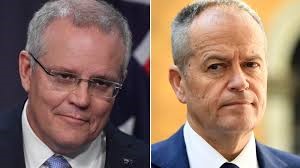
The 2019 Election Budget and Reply Special
This year is certainly unique! A budget that first needs to get through an election to be enacted yet there is so much we need to know right now. Rather than look too far into the long-range forecasts I will concentrate on changes that will affect the next 3 years, the election cycle and give you both the budget and Labor’s reply. Leaving it to you to guess who is likely to control the house of reps.
It is worth considering that independents may be more popular than ever in the 2019 election so while one of the major parties may hold more seats than the other. The ultimate power will only be achieved by negotiation with independents which can give a few people, more power than a whole party. Let’s hope this means that some of the more ridiculous proposals do not see the light of day.
Please note this is correct as of budget week, but no doubt there will be many changes as the campaign begins. I encourage you to follow us on Facebook to get the latest. We have 3 pages Ban Tacs Accountants, Ban Tacs Property Accountants for Investors and Developers and BAN TACS Financial Solutions.
Normally we would release our year end tax strategies booklet after the budget but this year we will delay that until after the election. Nevertheless, if you are looking for the basic strategies please refer our 2018 Year End Tax Strategies booklet and, as should always be the case, run any strategy by your accountant first.
Further reading: Year End Tax Strategies Booklet
Ok enough disclaimers and fluffing about the ridiculous uncertainty that we have to operate under. Here are the basics with the relevant dates. Hopefully between the two party’s proposals you can set a path.
Concessions for purchasing plant and equipment:
This is all about the date the equipment is first installed ready for use and your business turnover. Several dates and thresholds be careful.
Date Purchased: Small Business Turnover Limit: Write off Threshold:
| Before 29th January, 2019 | $10 million | $20,000 |
| Between 29/1/19 and 2/4/19 | $10 million | $25,000 |
| Between 3/4/19 and 30/6/20 | $50 million | $30,000 |
By buy, I mean installed and ready for use. If you are registered for GST then the cost cap is not inclusive of GST
This $30,000 write off certainly puts a lot of new cars within reach. Note: second hand plant and equipment are included. It is intended that this concession remain in place until 30th June, 2020 and Labor do not seem to be opposed to it.
The incentive is not available for horticultural plants and in house software.
Here is a trick if you are looking for a one-off large deduction. If your turnover is under $10 million and the pool value of your other assets, even purchased in previous years is less than $30,000 as at 30th June, 2019 or 2020 you can immediately write off the balance.
There is also an incentive for some businesses who would legitimately need a vehicle costing a lot more than $30,000 but you have to wait till next financial year. For vehicles acquired on or after 1 July 2019, eligible primary producers and tourism operators will be able to apply for a refund of any luxury car tax paid, up to a maximum of $10,000
Fighting the ATO:
This is only available for small businesses. The government will provide $57.5 million over five years from 2018-19 to the Department of Jobs and Small Business, the Administrative Appeals Tribunal (AAT) and the ATO to provide access to a fast, low cost, independent review mechanism for small businesses in dispute with the ATO. This came into effect on 1 March 2019.
It will be interesting to see if this filters through. Many years ago, the government allocated an amount to assist taxpayers with the legal costs of fighting the ATO, but they put the ATO in charge of deciding who qualified. Consequently, very little of this allocation is ever spent.
Likely Tax Brackets:
Julia Gillard removed much of the low-income tax offset saying it was an unnecessary complication. Well now it is more complicated then ever. Let’s just stick to the next 3 years ie until the next election after this one. It is so amazingly simpler if you do this that you have got to question whether the long-term forecast is just a distraction from the fact nothing much has changed. The actual tax rates right up to 30th June 2022 are not proposed to be changed by the current government but the tax offset will make a difference.
Here are the rates without taking into account Medicare (usually 2%) or the tax offsets:
| 0% | $18,200 |
| 19% | $18,201 to $37,000 |
| 32.5% | $37,001 to $90,000 |
| 37% | $90,001 to $180,000 |
| 45% | $180,001 + |
If Labor are elected, they intend to increase the maximum rate from 45% to 47% by re introducing the budget repair levy.
What has changed for both parties is the tax offsets you can use to pay some of this tax if you are a low to middle income earner. The figures below will apply for the next 4 years including the financial year we are currently in.
| Your Taxable Income | LNP Tax Offset |
| Under $37,001 | $255* |
| $37,000 to $48,000 | $255 + 7.5% of amount your income exceeds $37,000 |
| $48,001 to $90,000 | $1,080 |
| $90,001 | The offset starts to reduce at the rate of 3 cents for every dollar over $90,001.
Resulting in people earning $126,000 a year will not be entitled to any tax offset |
The exciting thing about this offset is that it has not been included in your take home pay so there should be a sizable refund in your next tax return.
*Labor have promised to match this and give an extra $95 tax offset to people whose income is less than $48,000.
Note the above offsets are in addition to the existing low-income tax offset of $445 that starts to shade out at the rate of 1.5 cents for every dollar over $37,000 completely disappearing at $66,667 for the 2018-2019 financial year. After that it will increase to $700 but shade out at the rate of 5 cents for every dollar between $37,500 and $45,000 after that it will only shade out at the rate of 1.5 cents in the dollar disappearing completely at $66,667.
Teachers:
From the start of the 2019 school year teachers accepting placements in very remote areas for four years (or part-time equivalent) will have their Help debt completely extinguished.
From 14 February 2019 indexation will no longer accrue on the HELP debts of all teachers while they are placed in very remote locations.
Superannuation and Retirees:
The government has finally woken up to the fact that it is not very fair to raise the retirement age to 67 but not allow you to make contributions to a superannuation fund once you reach 65 unless you pass a work test. It is a perfectly normal strategy to wait until the year after you retire to sell any investments you hold outside of superannuation, this minimises the CGT. Then contribute the proceeds into superannuation. The work test currently gets in the way of this if you retire at 65 even to the extent that it might not be worth working that extra year.
From 1st July 2020 retirees will not need to pass the work test to be allowed to contribute to superannuation as long as they have not reached 67 years of age. Further, from 1st July, 2020 taxpayers will be able to claim the tax offset for making spouse contributions as long as their spouse is under 75 years of age and passes the work test. If the spouse is under 67 years of age, they will not need to pass the work test from 1st July, 2020.
The cut off age for the bringing forward of 2 years non concessional (non-deductible) contributions will also be increased to 67 from 1st July 2020.
Labor’s Plans for Investors and Retirees
Labor’s Attacks on Self Supporting Retirees and those so aspiring who do not hold their wealth in a public superannuation fund. Warning, there is an absent of detail in the policy announcement, nevertheless more detail than we can normally expect from an opposition.
No Negative Gearing:
Properties purchased after 31st December 2019 that are not brand new. The owner will not be entitled to claim a deduction against their other income for any tax loss on that property unless they are able to offset it against other positively geared properties. There have been contradicting reports from Chris Bowen’s office as to whether the unused loss will increase the cost base or be carried forward to be offset against future rental profits. This provision also applies to shares though it is unusual for them to be negatively geared.
Reduction in the CGT discount:
If you buy property or shares after 31st December 2019 the discount you will be entitled to when calculating your capital gain will be limited to 25%. This of course is subject to you holding the asset for more than 12 months.
Loss of Franking Credit Refunds:
No start date has been announced for this measure. The plan is to not allow unused franking credits to be refunded if they are not needed to pay your income tax. With the exception of pensioners and public superannuation funds. This is an attack on middle of the road retirees just getting by enough not to get the pension but without there savings in superannuation. It can reduce a modest income of $36,000 down to $25,200 yet millionaires will still not pay any tax on their superannuation earnings and get the franking credits back if they are in a public fund.
Minimum of 30% Tax on Trust Distributions:
No start date has, at the time of writing, been set for taxing trust distributions at a minimum rate of 30%. The plan is not to grandfather this. So, at the moment it would be dangerous to purchase a property, that you intend to take through to retirement, in a trust.
 Julia's Blog
Julia's Blog